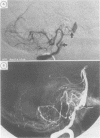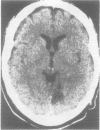Abstract
Two patients with angiographically proved basilar artery occlusion were treated with systemic recombinant tissue plasminogen activator (rtPA) according to protocol. The first patient was in a locked-in state and gradually deteriorated. On repeat angiography the basilar artery remained occluded. He died and necropsy revealed a pontine haemorrhagic infarction. The second patient, who was comatose and with decerebrate posturing, made a remarkable recovery. Angiography showed reperfusion. Therapy was initiated in the first patient after six hours and in the second after two hours. Treatment with rtPA is promising but probably not feasible for every patient. Success may depend on duration of occlusion and composition of occluding thrombus.
Full text
PDF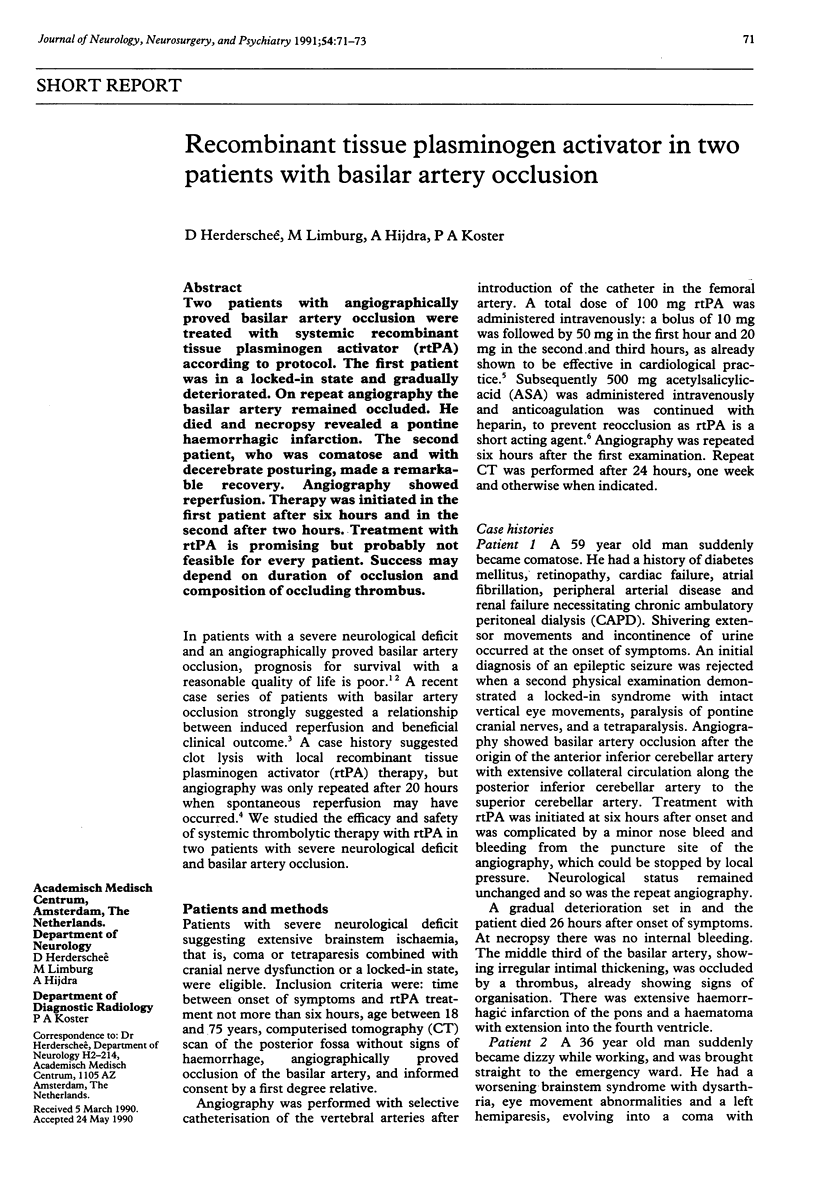
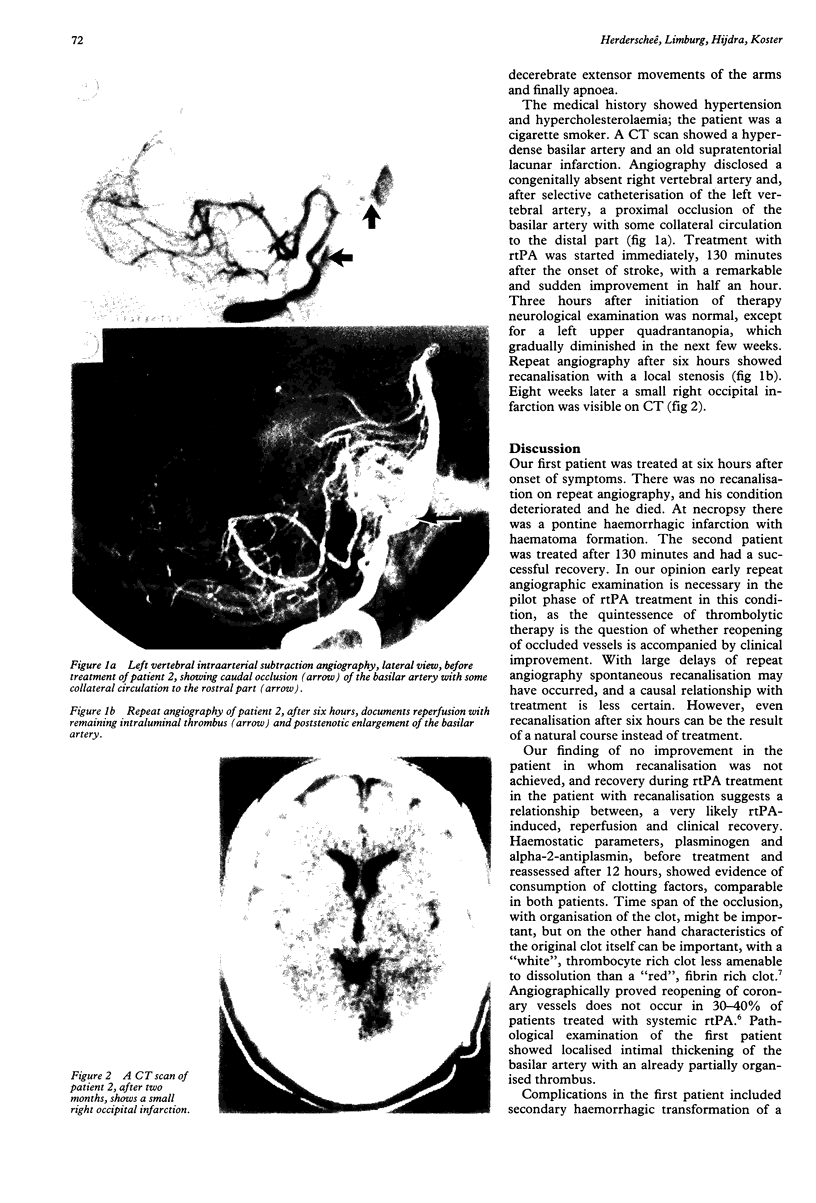
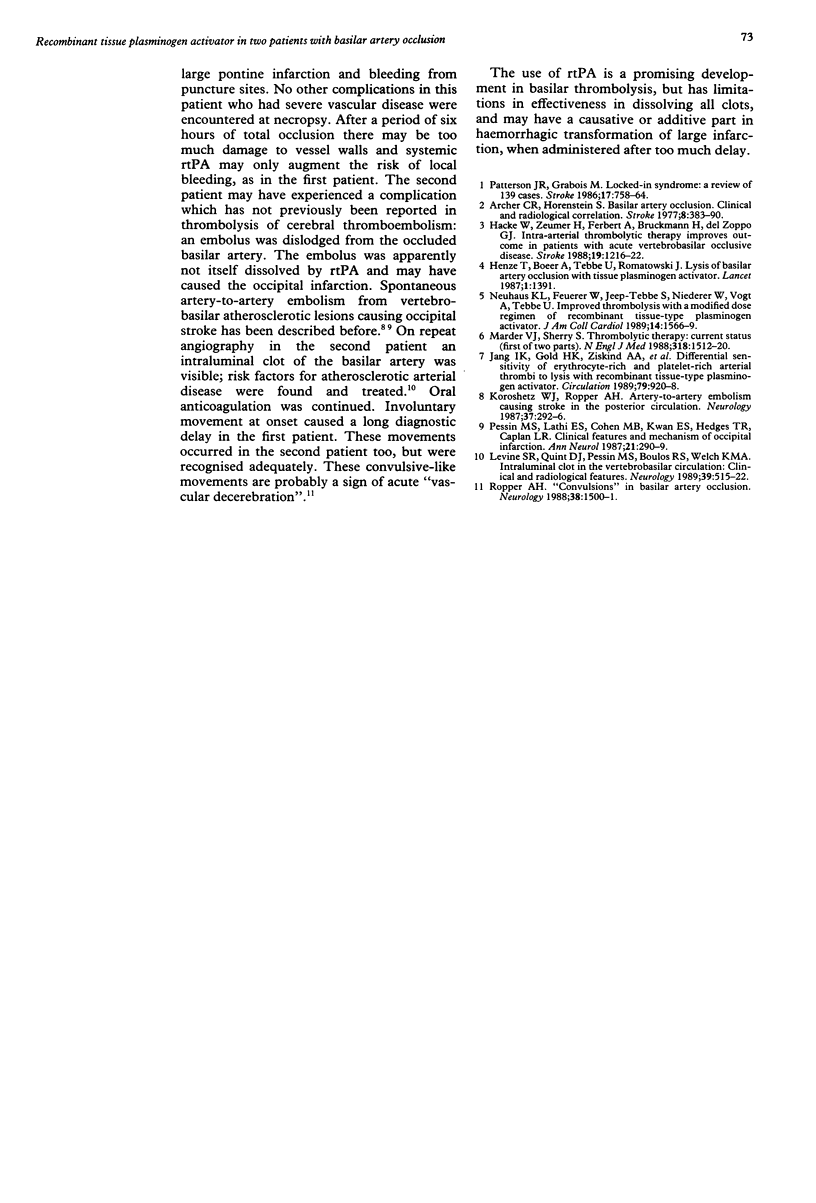
Images in this article
Selected References
These references are in PubMed. This may not be the complete list of references from this article.
- Archer C. R., Horenstein S. Basilar artery occlusion: clinical and radiological correlation. Stroke. 1977 May-Jun;8(3):383–390. doi: 10.1161/01.str.8.3.383. [DOI] [PubMed] [Google Scholar]
- Hacke W., Zeumer H., Ferbert A., Brückmann H., del Zoppo G. J. Intra-arterial thrombolytic therapy improves outcome in patients with acute vertebrobasilar occlusive disease. Stroke. 1988 Oct;19(10):1216–1222. doi: 10.1161/01.str.19.10.1216. [DOI] [PubMed] [Google Scholar]
- Henze T., Boeer A., Tebbe U., Romatowski J. Lysis of basilar artery occlusion with tissue plasminogen activator. Lancet. 1987 Dec 12;2(8572):1391–1391. doi: 10.1016/s0140-6736(87)91275-x. [DOI] [PubMed] [Google Scholar]
- Jang I. K., Gold H. K., Ziskind A. A., Fallon J. T., Holt R. E., Leinbach R. C., May J. W., Collen D. Differential sensitivity of erythrocyte-rich and platelet-rich arterial thrombi to lysis with recombinant tissue-type plasminogen activator. A possible explanation for resistance to coronary thrombolysis. Circulation. 1989 Apr;79(4):920–928. doi: 10.1161/01.cir.79.4.920. [DOI] [PubMed] [Google Scholar]
- Koroshetz W. J., Ropper A. H. Artery-to-artery embolism causing stroke in the posterior circulation. Neurology. 1987 Feb;37(2):292–295. doi: 10.1212/wnl.37.2.292. [DOI] [PubMed] [Google Scholar]
- Levine S. R., Quint D. J., Pessin M. S., Boulos R. S., Welch K. M. Intraluminal clot in the vertebrobasilar circulation: clinical and radiologic features. Neurology. 1989 Apr;39(4):515–522. doi: 10.1212/wnl.39.4.515. [DOI] [PubMed] [Google Scholar]
- Marder V. J., Sherry S. Thrombolytic therapy: current status (1). N Engl J Med. 1988 Jun 9;318(23):1512–1520. doi: 10.1056/NEJM198806093182306. [DOI] [PubMed] [Google Scholar]
- Neuhaus K. L., Feuerer W., Jeep-Tebbe S., Niederer W., Vogt A., Tebbe U. Improved thrombolysis with a modified dose regimen of recombinant tissue-type plasminogen activator. J Am Coll Cardiol. 1989 Nov 15;14(6):1566–1569. doi: 10.1016/0735-1097(89)90399-9. [DOI] [PubMed] [Google Scholar]
- Patterson J. R., Grabois M. Locked-in syndrome: a review of 139 cases. Stroke. 1986 Jul-Aug;17(4):758–764. doi: 10.1161/01.str.17.4.758. [DOI] [PubMed] [Google Scholar]
- Pessin M. S., Lathi E. S., Cohen M. B., Kwan E. S., Hedges T. R., 3rd, Caplan L. R. Clinical features and mechanism of occipital infarction. Ann Neurol. 1987 Mar;21(3):290–299. doi: 10.1002/ana.410210311. [DOI] [PubMed] [Google Scholar]
- Ropper A. H. 'Convulsions' in basilar artery occlusion. Neurology. 1988 Sep;38(9):1500–1501. doi: 10.1212/wnl.38.9.1500-a. [DOI] [PubMed] [Google Scholar]



